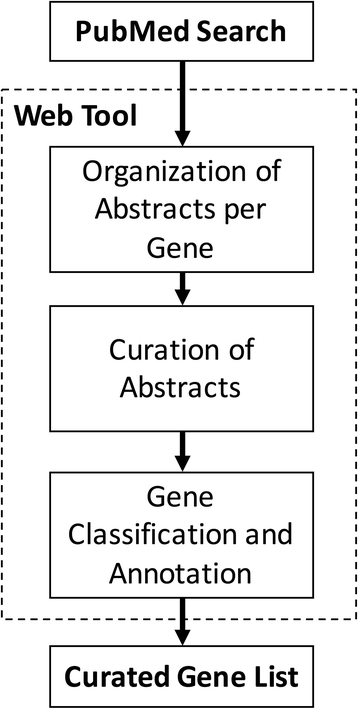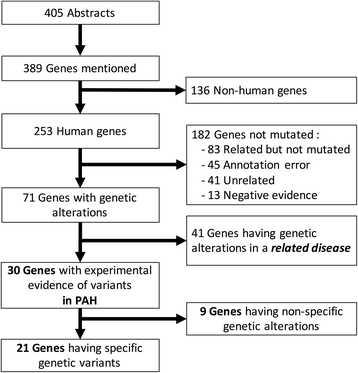A systematic review of genetic mutations in pulmonary arterial hypertension
- PMID: 28768485
- PMCID: PMC5541665
- DOI: 10.1186/s12881-017-0440-5
A systematic review of genetic mutations in pulmonary arterial hypertension
Abstract
Background: Pulmonary arterial hypertension (PAH) is a group of vascular diseases that produce right ventricular dysfunction, heart failure syndrome, and death. Although the majority of patients appear idiopathic, accumulated research work combined with current sequencing technology show that many gene variants could be an important component of the disease. However, current guidelines, clinical practices, and available gene panels focus the diagnosis of PAH on a relatively low number of genes and variants associated with the bone morphogenic proteins and transforming Growth Factor-β pathways, such as the BMPR2, ACVRL1, CAV1, ENG, and SMAD9.
Methods: To provide an expanded view of the genes and variants associated with PAH, we performed a systematic literature review. Facilitated by a web tool, we classified, curated, and annotated most of the genes and PubMed abstracts related to PAH, in which many of the mutations and variants were not annotated in public databases such as ClinVar from NCBI. The gene list generated was compared with other available tests.
Results: Our results reveal that there is genetic evidence for at least 30 genes, of which 21 genes shown specific mutations. Most of the genes are not covered by current available genetic panels. Many of these variants were not annotated in the ClinVar database and a mapping of these mutations suggest that next generation sequencing is needed to cover all mutations found in PAH or related diseases. A pathway analysis of these genes indicated that, in addition to the BMP and TGFβ pathways, there was connections with the nitric oxide, prostaglandin, and calcium homeostasis signalling, which may be important components in PAH.
Conclusion: Our systematic review proposes an expanded gene panel for more accurate characterization of the genetic incidence and risk in PAH. Their usage would increase the knowledge of PAH in terms of genetic counseling, early diagnosis, and potential prognosis of the disease.
Keywords: Genetic panel; Germ-line mutation; Heterozygote detection; Systematic review.
Conflict of interest statement
Ethics approval and consent to participate
Not applicable.
Consent for publication
Not applicable.
Competing interests
The names of the companies offering the available gene panels were not included to avoid misinterpretations regarding conflicts of interest. The authors declare that they have no competing interests.
Publisher’s Note
Springer Nature remains neutral with regard to jurisdictional claims in published maps and institutional affiliations.
Figures




References
Publication types
MeSH terms
Substances
LinkOut - more resources
Full Text Sources
Other Literature Sources
Medical
Miscellaneous

